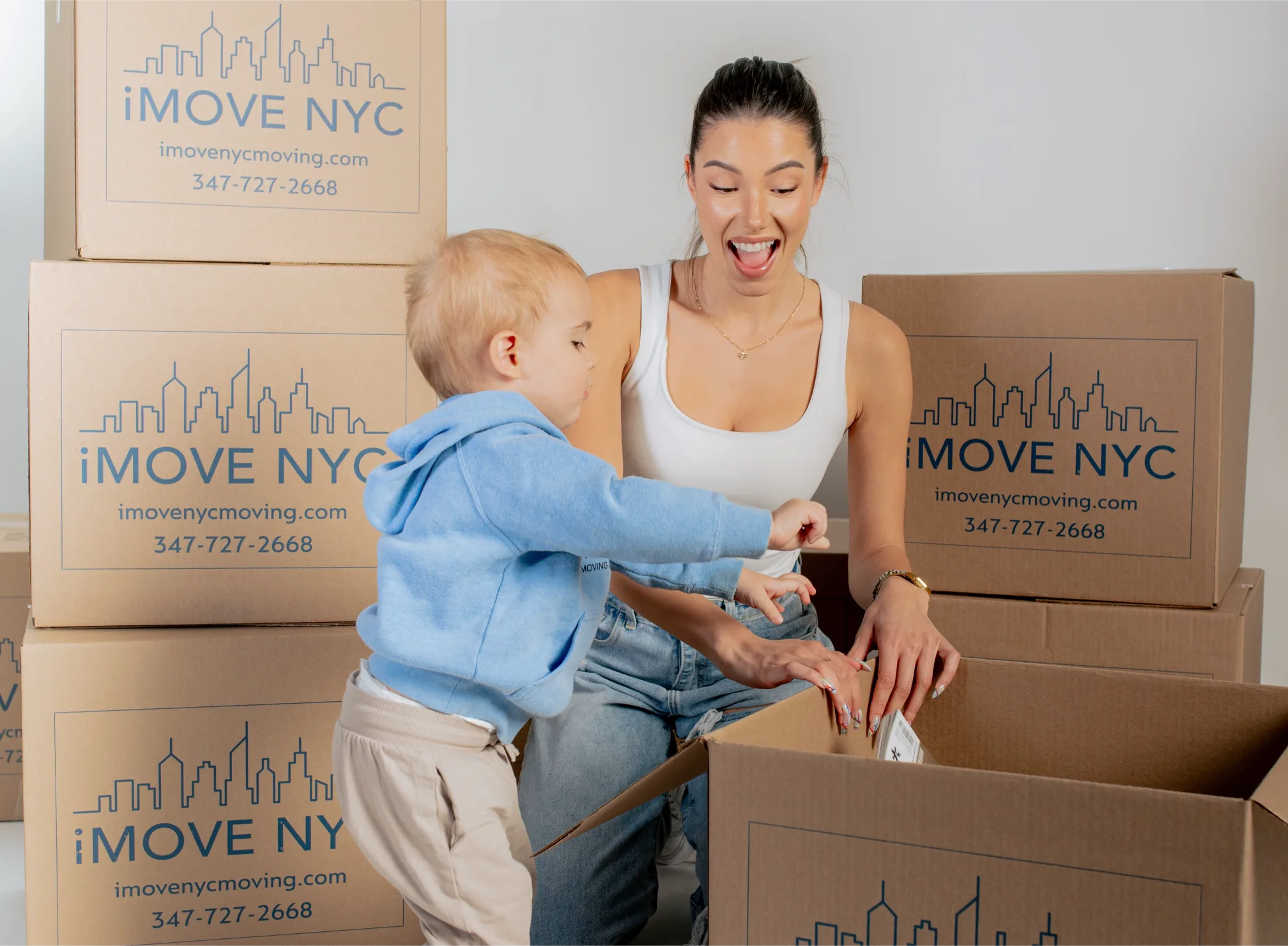Moving is often hailed as one of life’s most stressful events – and for good reason. Between packing, logistics, and the uncertainty of a new environment, it’s easy to feel overwhelmed. For pets, however, the experience can be even more disorienting. Dogs and cats thrive on routine, familiar scents, and the comfort of their territory. Sudden changes – like strangers entering the home, disappearing furniture, or the sight of moving boxes – can trigger anxiety, confusion, or even fear.
Common stressors for pets during a move include:
- Disrupted routines: Feeding times, walks, or play sessions may be overlooked in the chaos.
- Unfamiliar smells and sounds: Packing materials, loud noises, or new voices can unsettle animals.
- Changes in “safe” spaces: Pets often retreat to favorite spots when stressed, which may vanish as furniture is moved.
- Owner stress: Animals are highly attuned to human emotions, so your own anxiety can amplify theirs.
This combination of factors makes moving especially challenging for cats and dogs, who rely on stability to feel secure. For pet owners, watching a furry family member struggle adds emotional weight to an already demanding process. Fortunately, with thoughtful planning and experienced movers such as iMOVE NYC, you can minimize the strain on everyone involved.
In this practical guide, we’ll share strategies for how to make moving less stressful for cats and how to make moving less stressful for dogs, ensuring a smoother transition for your entire household. Let’s dive into actionable steps to keep tails wagging and purrs rumbling, even on moving day.
Preparing Your Pet (and Yourself) Before the Move
A well-prepared move is a calmer move – for you and your pets. By tackling essential tasks ahead of time, you’ll minimize last-minute chaos and create a sense of stability for your furry companions. Here’s how to make moving less stressful for cats and how to make moving less stressful for dogs with proactive planning:
Update Identification & Research Regulations
Start by ensuring your pet’s safety net is intact. For dogs, this means:
- A new ID tag with your updated address and phone number.
- Updating their microchip registration (many databases let you do this online!).
For cats, even indoor explorers should wear a breakaway collar with current contact info, and double-check that their microchip details are accurate.
If you’re moving across state lines, research local pet laws. Some states require specific vaccinations (like rabies tags), restrict certain breeds, or enforce unique leash laws.
Pro tip: Check your new city’s website for pet licensing rules – this applies to cats, too!
Prep Their Medical Needs
Locate the nearest 24/7 emergency vet clinic to your new home before moving day. Ask your current veterinarian for referrals to trusted clinics in your new area, and schedule a checkup to:
- Transfer medical records (most vets handle this digitally).
- Refill prescriptions for medications or calming aids.
- Request a health certificate if required for interstate travel.
Having these details sorted ensures continuity of care and peace of mind.
Scout Pet-Friendly Amenities
Help your pet adapt faster by mapping out their new “happy places”:
- Dog parks, trails, or grooming salons for pups.
- Pet stores with their favorite food or litter brands.
- Cat-friendly features like quiet window perches or nearby green spaces (for leashed adventures).
Bookmark these locations on your phone so you’re ready to explore post-move!
Partner With Pet-Savvy Movers
A professional moving company experienced with pets can be a game-changer. Look for teams that:
- Stick to timelines to reduce prolonged disruption.
- Keep doors/gates secured to prevent escapes.
- Offer packing strategies to maintain a “safe zone” for pets during the move.
At iMove NYC Moving, our crews prioritize efficiency and pet safety, ensuring your move is quick and smooth.
Tips for Moving Day (and the Days Right Before)
Moving day is here – and while it’s easy to get swept up in the frenzy, your pet’s comfort should remain a priority. Here’s how to make moving less stressful for cats and how to make moving less stressful for dogs with mindful, last-minute prep:
Shower Them With Reassurance
Pets sense upheaval, so carve out time for intentional bonding:
- Stick to routines: Maintain regular mealtimes, walks, and play sessions. For dogs, a familiar walk schedule grounds them; for cats, keep feeding times consistent.
- Offer extra affection: Belly rubs, ear scratches, or calming music can soothe nerves. Even 10 minutes of focused attention helps pets feel secure.
- Avoid “goodbye” energy: If you’re stressed, pets will mirror it. Stay calm, and speak to them in a relaxed tone.
Acclimate Pets to Packing Chaos
Sudden changes trigger anxiety. Ease them into the process:
- Introduce boxes early: Place empty boxes in your home days before packing. Let cats explore them (sprinkle catnip inside!) or let dogs sniff freely.
- Pack gradually: Avoid marathon packing sessions. Spread tasks over days to minimize disruption.
- Save their belongings for last: Pack pet beds, toys, and bowls right before leaving. Unpack these first at the new home to signal familiarity.
Secure Pets Safely on Moving Day
Chaotic environments are risky. Protect them with these steps:
Pre-travel prep for cats:
- Feed them 3+ hours before travel to prevent nausea.
- Spray carriers with feline pheromones (e.g., Feliway) to reduce stress.
- Secure carriers in the car with seatbelts, and cover with a light blanket to block visual overstimulation.
Dog safety essentials:
- Keep dogs leashed or crated during loading/unloading.
- Assign a family member to monitor them, or book a pet sitter for the day.
- Pack a “go bag” with treats, water, poop bags, and a favorite chew toy.
Create Instant Comfort in the New Home
Help pets adjust faster by replicating their old environment:
- Set up a “safe room” first: For cats, designate a quiet space (like a bathroom) with their bed, litter box, and a worn T-shirt with your scent. For dogs, place their bed and toys in a corner away from foot traffic.
- Unpack familiar items immediately: Old blankets, scratched-up scratching posts, or that ratty tennis ball matter more than new replacements.
- Use distractions: Offer a lick mat for dogs or a puzzle feeder for cats to redirect nervous energy.
Helping Pets Settle Into Their New Home
You’ve arrived at your new home – now it’s time to help your furry family members feel like it’s their space, too. Whether you’re focused on how to make moving less stressful for cats or how to make moving less stressful for dogs, these post-move strategies will ease the adjustment period and build confidence in their unfamiliar surroundings.
For Cats: Slow and Steady Wins the Race
Cats thrive on control, so let them explore at their own pace:
- Start with a “base camp”: Confine your cat to one quiet, small room (like a bathroom or bedroom) for the first 24–48 hours. Include their litter box, bed, food/water bowls, and a piece of your unwashed clothing for comfort.
- Use scent swapping: Rub a soft cloth on your cat’s cheeks (where their scent glands are) and wipe it on doorways or furniture to mark the new territory as safe.
- Gradually expand access: After a day or two, open the door and let them explore other rooms while supervised. Block off hiding spots like under beds until they’re more confident.
- Stick to old routines: Feed them at the same times, and use the same litter brand to avoid adding new stressors.
Pro Tip: Plug in a feline pheromone diffuser near their base camp to mimic calming “happy signals.”
For Dogs: Confidence-Building Exploration
Dogs often bounce back faster than cats, but structure is key:
- Leashed house tour: Before unleashing your dog, walk them room-by-room on a leash. Praise calm behavior and let them sniff thoroughly – this is how they “read” their environment.
- Recreate their old setup: Place their bed, toys, and bowls in a similar layout to your previous home (e.g., food in the kitchen, bed in the bedroom).
- Reinforce routines ASAP: Resume regular walks, playtime, and feeding schedules. A familiar rhythm helps dogs feel secure.
- Secure outdoor spaces: Inspect fences for gaps, remove toxic plants (e.g., lilies, azaleas), and check for hazards like loose mulch or exposed wiring.
Pro Tip: Take your dog on a walk around the new neighborhood early – it builds positive associations and burns off anxious energy.
For Both Pets: Safety First
Before giving pets free reign:
- Pet-proof every room: Ensure cabinets with chemicals are locked, loose cords are tucked away, and small objects (like rubber bands) are out of reach.
- Check for hidden hazards: Previous owners may have left behind rodent bait, antifreeze puddles in the garage, or toxic plants in the yard.
- Avoid sudden changes: Wait a few weeks before introducing new food, grooming tools, or furniture. Familiarity is your ally.
Why Choose iMOVE NYC for a Pet-Friendly Transition
At iMOVE NYC, we understand that moving with pets isn’t just about transporting boxes – it’s about safeguarding your furry family’s peace of mind. As a trusted, NYC-based local moving company, we’ve helped countless pet owners navigate the chaos of relocation with minimal stress for their cats and dogs. Our experienced team is trained to work efficiently and thoughtfully, ensuring your home is packed, loaded, and delivered on time without disrupting your pet’s sense of security.
From the moment you partner with us, we prioritize strategies to make moving less stressful for cats and dogs. We coordinate timelines to reduce prolonged noise, keep doors securely closed to prevent escapes, and even help create designated “safe zones” where pets can retreat during the move. Beloved by our clients for our reliability and care, we take pride in turning overwhelming transitions into seamless experiences.
Ready to plan your stress-free move? Contact iMOVE NYC today – where your pet’s comfort is part of the package.




